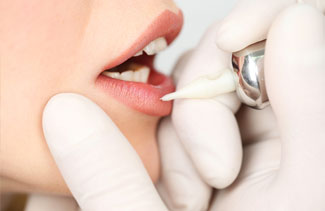Meet Ombre Brows
What are Ombre Brows? (Also known as Powder Brow Tattooing)
Ombre Brows are a semi-permanent cosmetic procedure to shape and enhance the natural brow. The procedure is primarily carried out by using cosmetic tattoo machinery. The technique behind the art is to swing the hand piece of the machine in a pendulum motion so that the micro needle hits and penetrates just the surface of the skin in a pixellated manner. After several layers the effect is a beautiful natural misty powdery look that closely imitates the look of powdering your brows using make-up or getting a fresh brow tint.
The technique also allows you to create varying shades to your personal preference, such as the natural ombre look. (starting lighter at the nose and progressively getting darker through to the tail).
Aside from the utmost benefit of the procedure, that is the beautiful misty powdery natural look, there are a lot of other significant positives to the procedure when compared to other permanent cosmetic brow procedures (such as microblading), that is; it is far less painful, the pigment implantation is not as intrusive as microblading (therefore reducing the risks of micro scarring), healing time is very minimal and often unrecognised, most people are able to walk out after the procedure and go about the routine without noticeably looking blackened brows, the colours stay much truer to the desired intention more so than micro bladed pigment implementation.
Powder touch brows generally last around 1-2 years and a refresh is usually required between 18-36 months.
Most people are likely candidates for powder brows and the results are virtually always spot on. Unfortunately the desired outcomes of the microblading procedure are often compromised by many common issues such as; oily skin, large pores, autoimmune disease, frequent sweating due to extensive working out, alopecia, thyroid conditions and menopause, etc
Ombre brows, powder brow tattooing is becoming the preferred choice over other permanent cosmetic brow tattoo methods.
Pre-appointment and after care.
If you have a picture of the type of brow/look you are after then please bring it in to your appointment or send it through via text or email.
Please arrive on time for your appointment and allow at least 1-2 hours for your procedure. There is no requirement to apply any form of numbing prior to your appointment. We will advise you at the appointment and apply if needed then. If you have any serious skin allergies or health concerns, please advise at least 1 week before your appointment (in case a consult with your GP is required).
The optimal result of your desired brow look may take 2 procedures to achieve. The recommended intervals between procedure are 2 to 3 months. The subsequent procedure after initial one (original procedure) is referred to as a touch up and helps to achieve;
- More equal and accurate pigment allocation in designated areas;
- Achieve more accurate colours and tonal ranges to meet client expectations.
-
Greater lasting result.
Pigment is implanted into skin with special
equipment using needles. Pigments are recognised as foreign substance by the
immune system. In the process of wearing the PM, pigment is gradually
rejected by the body over time. Depending on the individuals immune system,
the dye can be stored in different parts of the skin during different times
(from several months to several years). Periodic procedures are required to
maintain and achieve the high quality of the PM. Usually between 1-2 years is
an average time frame. The subsequent annual procedures are referred to as
“refresh†procedures.
Healing process and recommended aftercare.
External recovery of the skin occurs within
4-14 days. Internal recovery of the skin lasts within 1-2 months.
The recommended aftercare and hygiene
assist in preventing complications during healing process.
In the case of complications in healing, it
is highly recommended you contact your technician and / or see your GP for
medical advice.
The healing process consists of several
steps, below are some guidelines;
-
Skin redness, which
can last between 20 minutes through to several hours. This is normal and no
action required
-
Swelling around treated areas, this usually
passes after the first day but in some cases can take as long as 2-3 days. This
is normal and no action required.
-
Lymph release, which
lasts between 2-3 hours after procedure. It is recommended to continue to dab the treated
area with a dry cotton pad several hours after
procedure in order to remove discharge from the surface of skin and avoid thick
scabs forming.
-
Initial formation of scabs, which
occur after the first day of procedure and are characterised with bright
colour. It lasts between 4 days up to 2 weeks (average period is 6 days). The
client must not undertake the following activities during this period:
attending sauna, bath, swimming and avoid direct sunlight. It is not permitted
to touch the effected scab area, nor scratch and remove in any form including
soaking. If the scabs are removed by force the effected areas will lose
pigmentation during healing and scars may form. It is recommended to avoid
washing or moistening the treated areas, if this occurs, its recommended to
gently sponge dry with cotton disk. It is not recommended to apply your own
post-procedural care or use decorative cosmetics before the scabs flake off
naturally. Apply nothing for the first 3 days after procedure. During the period
of scabs forming (from third day after the procedure) apply only natural paw paw ointment with cotton bud or clean finger in thin layers when dry sensation or tightening sensation
occurs (on average between 3-4 times a day). Avoid using any wound healing or
regenerating medicines as this will accelerate the regeneration process and
reduce the retention of pigments in the skin. For clients suffering from oral
herpes it is recommended to take regular medical treatment, prescribed by GP,
after permanent make-up applied on lips.
-
Flaking of scabs. The
initial flaking of scabs will result in loss between 20-50% of colour.
Secondary scabs will form (colourless and flaking in appearance), that will
last up to 10 days, colour will be restored by 10-20% from initial pigmentation.
Within this period, no special treatment is required. But in order to avoid
post-traumatic hyperpigmentation the client must avoid direct sunlight for a
month after procedure.
-
Full skin regeneration, will occur between 4-9
weeks from day of procedure. This depends on the age of client and skin
conditions. Any interference in the regeneration process (such as early
touch-up procedure or some cosmetology procedure associated with violating the
integrity of the skin) is strictly prohibited because it can provoke the
formation of scars. On average, colour will be stabilized approximately 28 days
after procedure. Within this period, no special treatment is recommended.
However, as mentioned above, the client must avoid direct sunlight for a month
after the procedure in order to avoid post-traumatic hyper pigmentation. If the
client is exposed to direct sunlight, she/he must use maximum sunscreen
protection on treated areas. The use of Retin-A/T retinoid, Glycolic Acid,
Hydroxy Acid, Fruit Acid, chemical peels or any other rapid skin exfoliation
products used regularly on the permanent make-up area will cause the
pigmentation to fade prematurely.
-
WARNING: in addition, Salt Water, Chlorine,
exfoliation creams, and exposure to the sun will cause colours to fade.







